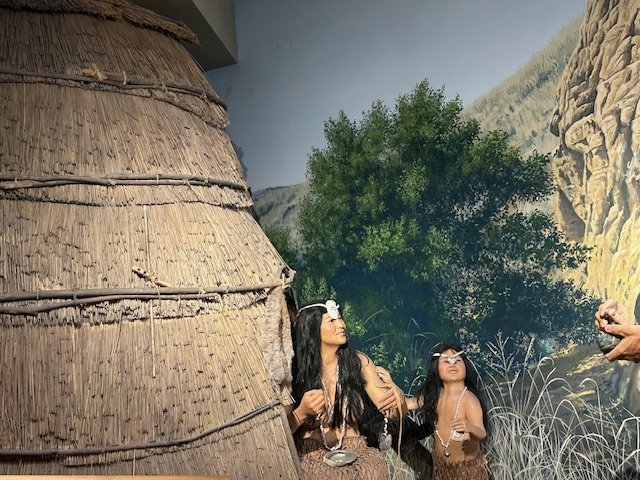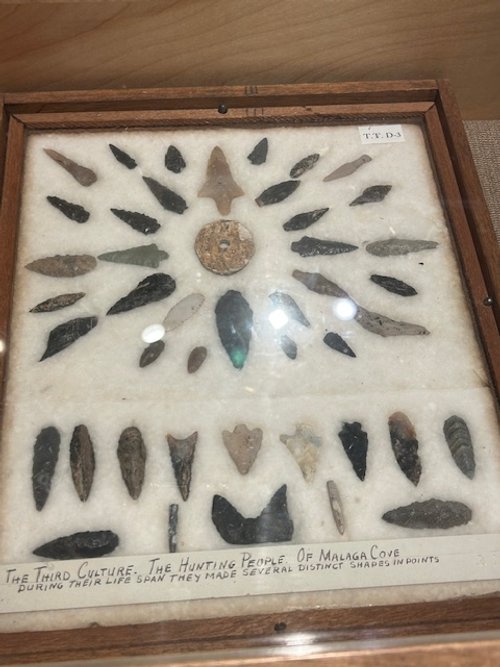From Palos Verdes to the Pyramids By Contributor and Writer Deborah Paul
On a recent Viking river trip down the Nile River in Egypt my husband Jim and I couldn’t help notice how proud the Egyptians and Nubians were of their amazing heritage.
We are also proud of our centuries old beginnings on the Palos Verdes Peninsula, however less antiquated are our statues, decorative walls, fountains and many historical artifacts left by others who laid footsteps here before us.
Truly, the mysterious temples, statues, tombs and artifacts around Cairo and Luxor were a sight to behold and sadly reminded me how lacking my education was about a culture that was probably the most magnificent in human history.
Still, I took a morning trip around the peninsula in hopes of juxtaposing the likes of 3,500 b.c. temple pillars of Hathor to our statuesque 99-year-old Point Vicente Lighthouse.
Eventually, when the Palos Verdes Peninsula Historical Museum is built on the San Vicente property, many of our historical exhibits and photos, as well as significant items in storage will find a resplendent new home.
In the meantime, I tried to envision the native Tongva people — who left no written language or hints of their histories — who inhabited the peninsula for thousands of years. They were first encountered and recorded by Juan Cabrillo around 1542 and left traces of village life around the Abalone Cove area where they fished and hunted.
Additionally, the Chowigna Indian tribe who left hearths and numerous dead were believed to inhabit Palos Verdes Peninsula about 8,000 years ago.
Just as the Nile’s history is literally paved in stone with only about 5 percent of all tombs, temples and other edifices uncovered to date, so PV’s history is paved with early farms and ranches, animal fossils and other traces of ancient tribal life.
Our Viking guides, highly educated Egyptologists, took great care to point out temple stories and curiosities we would otherwise miss.
Not uncommon in numerous temples is a mystifying scene where the pagan goddess Hathor, mother of all Egyptian gods and goddesses is seen giving birth to Horus, a major god in the Egyptian culture.
Scenes honoring Hathor as the mother of all gods and goddesses are repeatedly chiseled on the walls and columns as sometimes as high as 70 feet tall. Many times she is depicted on a birthing chair where attendant maidens catch the baby as is falls.
(9) Other evidence of Egypt’s preoccupation with worshiping unusual deity are tangible traces of the god Sobek, believed to represent strength and virility. He was revered for about 3,000 years — as late as 350 A.D.
Further, The Crocodile Museum near the Temple of Kom Ombo near Aswan is entirely devoted to a collection of crocodiles once worshiped by the ancient Egyptians.
Inside, visitors can view mummified crocodile, eggs and fetuses, coffins, wooden sarcophagi, and statues of Sobek who bears the head of a crocodile on a human body. Feared but respected, the crocodile’s ability to snatch and gobble up its prey was symbolic of the might and potency of the pharaoh and kings, who many times were appointed to be gods or goddesses by ambitious temple priests.
At our end of the globe, the San Vicente Interpretive Center is home to numerous fossils, tribal artifacts and other points of interest.
A trip through its halls will yield a plethora of interesting exhibits. Fossilized sharks, whale teeth, mammoth tusks and other bygone animals and bones are displayed, clearly showing Portuguese explorers weren’t the first ones here.
Juxtaposing Egyptian greatness to our 21st century architecture may seem futile, but our Palos Verdes homes, historical points and fossilized artifacts are just as interesting if one takes the time for discovery.
According to city records, the first permanent cottage on the peninsula was built by businessman, farmer and rancher Harry Philips Sr. in 1894 near the present day Rolling Hills City Hall. Later Frank Vanderlip, after a prior history of complicated options and legal transactions, organized a coalition of investors and managed to purchase the 16,000 acres in 1913. He built his permanent home in 1916 in the Portuguese Bend area which today is still inhabited by some descending family members.
Still, “old” takes on new meanings when witnessing the greatness of a civilization or community.
The Step Pyramid of of Djoser at Saqqara, about 15 miles south of Cairo, was built about 4,700 years ago and is considered one of the oldest pyramids.
Abu al-Hol, commonly known as the Sphinx was erected to ward off tomb raiders and enemies of the Pharaohs and was thought to have great power and wisdom.
Our tour guide Ghada Doss, shared a more current theory that a 14th century Sufi Muslim may have purposely chiseled and chipped the nose off the Sphinx out of religious fervor, debunking the 19th century conjecture that Napoleon’s army used the Sphinx for target practice.
One of our own well-worn curiosities lies down some steps behind the Palos Verdes Estates Neighborhood Church. The constructed man-made cave screams “before recorded time” given the looks and texture of the rocks, but church historians believe it was built the same time the original home on the property was built in 1928. Today, the cave is used for Christmas manger scenes, but doesn’t seem to be a known site to many residents or tourists.
Other notable relics around the hill are a number of treasured fountains.
Malaga Cove’s Neptune Fountain, which is 2/3 the size of the original fountain in Bologna, Italy has a colorful history of vandalism and stolen fragments but has survived for almost 10 decades.
The beloved landmark is in line for renovation as soon as Palos Verdes Estates Foundation raises $50,000.
Previously, (as referenced by Donna Littlejohn in a 5/11/2018 article in the Daily Breeze,) the statue had been situated in a Venice villa for more than 100 years. When Roman art collector, Arnoldo Adolfo di Segni, offered the Neptune statue, the PVHA and Art Jury accepted. The basin for the statue was later commissioned to a Los Angeles sculptor, Harry Winebrenner, but the basin was constructed in Italy and shipped to CA for completion and dedicated on Feb. 16, 1930.
According to city reports, another fountain in Lunada Bay, also known as “La Fuenta de los Ninos” (The Children’s Fountain) was a community landscaping project dedicated to architect G. Brooks Snelgrove. More than 250 neighborhood children raised the funds for the project and gave the fountain to the city as a gift in 1965. The fountain was refurbished, beautified and rededicated in 2008.
The Malaga Cove Library Fountain is the oldest in the city. It was built in 1928 using Palos Verdes stone and predates the construction of the Malaga Cove Library.
Landscape architects, John and Frederick Olmsted were hired by the Palos Verdes Project to design and build the small parkland in addition to a unique circular-shaped fountain as well as the wall fountain below.
Lastly, although no information can be found on the faux marble fountain found at the entrance of the Trump National Golf Course, its beauty is no less classically old Italian. The fountain, most likely depicting Neptune holding a cornucopia overflowing with fruit has adorned the entrance to the resort since about 2006.
So, maybe our Palos Verdes Peninsula doesn’t hold the vast secrets of ancient Egyptian pyramids and colorful pagan gods and goddesses, but it appears our earliest settlers and all current lovers of aesthetic beauty and history have done their best to bring a fascinating modicum of culture to our ever changing shores.
Deborah Paul has played with ink since she was able to read and write. At 19, after two years of college, she left St. Louis to fly for American Airlines, and later enjoyed a long career with Flying Tiger Lines in many capacities, including flying military and their dependents all over the world as a flight attendant. Paul returned to university in the 1990s earning a journalism degree from Cal State University Dominguez Hills and was eventually hired as a newspaper reporter for the South Bay Weekly section of the Los Angeles Times. A decade later she worked for Orange Coast Magazine as their Charitable Events editor. She also taught journalism and was advisor to the campus newspaper at CSUDH and still contributes as a regular stringer for Peninsula News on the Palos Verdes Peninsula. Currently, she has published five children’s books and most recently a zany cookbook featuring recipes from her former Flying Tiger Flight Attendant partners. Her poetic fictional stories are inspired by real people who have left an indelible mark on the quiet display of simple human kindness. She resides in Rancho Palos Verdes married to Jim, her husband of many adventures.



































